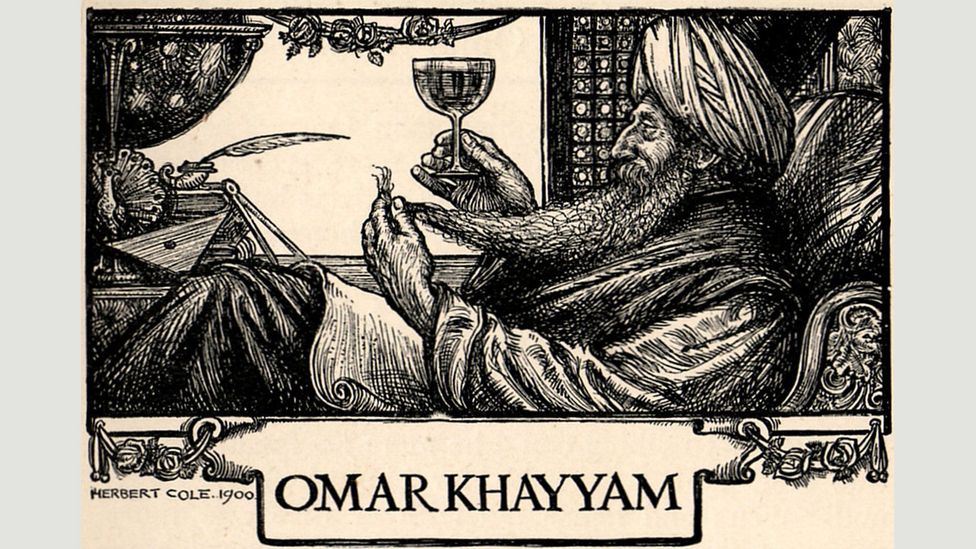
Pictorial or the so-called tableau rugs have been produced in Iran for ages. Images of noblemen, shahs, hunting scenes, etc. are still replicated from the most ancient Safavid designs.
There is a special genre within these rugs, rugs that illustrate poetry, and often times poetry by the 12th century Sufi mystic, mathematician and astronomer Omar Khayyam.

Omar Khayaam (1048-1131)
Khayyam’s poetry is profoundly philosophical, but also sensual, time and again glorifying wine drinking, song and female company.
His seminal compilation of poems named collectively The Rubáiyát is viewed as the greatest literary achievement in Persian language.
‘Oscar Wilde described the Rubáiyát as a “masterpiece of art”, placing it alongside Shakespeare’s sonnets as one of his greatest literary loves (Credit: Alamy)’

It is suggested that Khayyam’s attitude toward life, his pessimism and religious scepticism, are contrasted in his verse by the exaltation of ‘earthly’ pleasures, and serve as an antidote to his existential sorrow.

Small-format carpets depicting scenes of wine drinking orgies involving music, dance and even nudity can be found sporadically in various collection around the world.
The tradition of producing such rugs survived many dynasties – the Safavids, the Kajards, but found itself at a crossroads in 1979 with the foundation of the Islamic Republic.
It is prohibited (haram) in Islam to depict animate objects (humans and animals). This rule is strongly observed within the Sunni communities in the Middle East and around the world.
It is not the same under the Iranian Shia regime of the ayatollahs.
In fact, portraits of revered Shia martyr, Ali can be frequently seen in Iranian households.
One thing however is to show an image of the prophet’s son-in-law; it is another thing altogether to show wine drinking parties and female nudity.
Alcohol consumption is strictly prohibited in Iran, and women are required to wear headscarves; some choose to wear chadors – black robes concealing them in full.
And yet …
Here is a small Tabriz in our collection illustrating a poem by Omar Khayyam:
‘It’s us and the musician and this ruined corner.
My soul, heart, place, and painful clothes of wine.
No hope and mercy and fear of punishment
Free from soil and wind and fire and water’
You may contact us if interested in purchasing this unique work of art
See the original 1960s Persian print:



